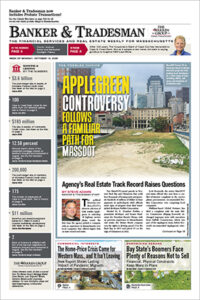Financing a home purchase can be a challenge in the high-cost Bay State, but moving may not be a better option – a recent report from Down Payment Resources concludes it is increasingly difficult to be a first-time buyer in housing markets across the country.
“As the spring sales season opens, the outlook for first-time buyers may even be worse than last year. The inventory shortage may be slowing in hotter markets where soaring prices are killing demand and slowing sales, but in most of America inventories are still falling,” Rob Chrane, CEO of Down Payment Resources, said in letter prefacing the organization’s most recent report.
First-time buyers are so crucial to the real estate economy that nine years ago Congress enacted a First-Time Home Buyer Tax Credit to jumpstart the nation’s moribund housing markets.
“A good case can be made that first-time buyers were better off in 2009 than they are today,” Chrane wrote. “A stingy economic recovery has denied young Americans the income levels enjoyed by older generations and has kept them in rentals and their parents’ homes. Student debt keeps the best educated shackled by high debt levels.”
And a chronic inventory shortage is inflating the cost of entering homeownership not just in expensive coastal markets like Boston, but also in heartland cities like Buffalo, Philadelphia, Minneapolis and Atlanta, the report concludes.
The share of homes purchased by first-time buyers opened 2018 at 29 percent of all residential sales in both January and February, according to the National Association of Realtors’ (NAR) Confidence Index, a monthly survey distributed to over 50,000 real estate practitioners. The first-time buyer share fell to 29 percent last September for the first time since October 2015 and returned to 29 percent in November and again in January. The February share marked the first time in recent years that the new buyers’ share has stayed at 29 percent for two consecutive months, suggesting that the first-time buyer share is settling in at the lower level in advance of the 2018 spring season.
The percentage of consumers younger than 35 who think now is good time to buy a home has dropped seven percentage points over the past year, from 62 percent to 55 percent, and the percentage of young buyers who think this is not a good time to buy rose by the same margin, from 38 percent to 45 percent, according to the first quarter Home Opportunities and Market Experience survey by NAR’s research department.





